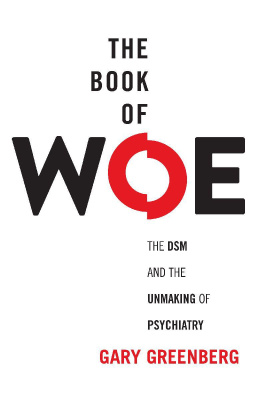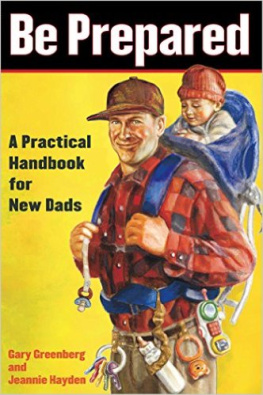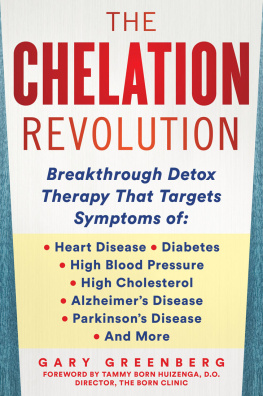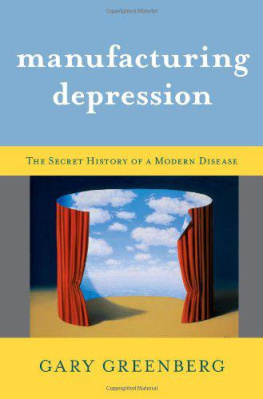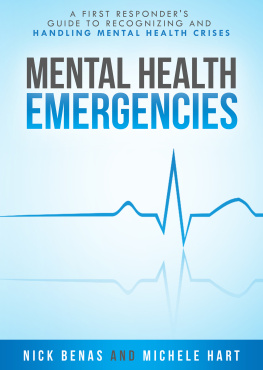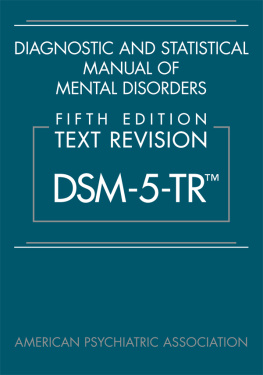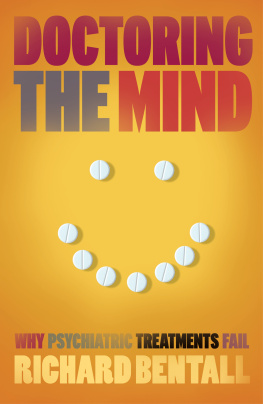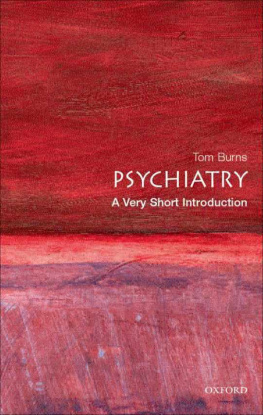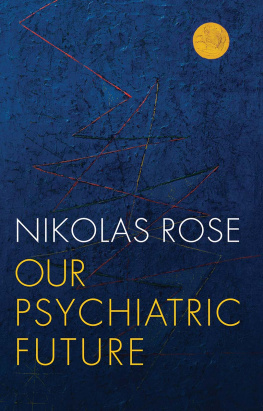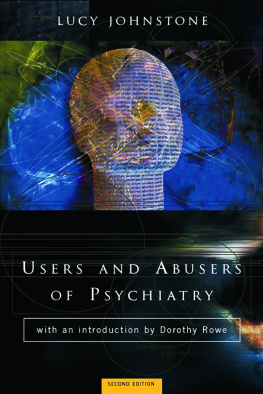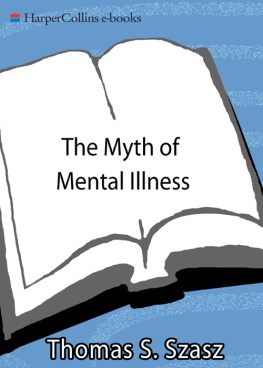Published by the Penguin Group
Penguin Group (USA) Inc., 375 Hudson Street,
New York, New York 10014, USA
USA Canada UK Ireland Australia New Zealand India South Africa China
Penguin Books Ltd, Registered Offices: 80 Strand, London WC2R 0RL, England
For more information about the Penguin Group visit penguin.com
Copyright 2013 by Gary Greenberg
All rights reserved. No part of this book may be reproduced, scanned, or distributed in any printed or electronic form without permission. Please do not participate in or encourage piracy of copyrighted materials in violation of the authors rights. Purchase only authorized editions.
Published simultaneously in Canada
Library of Congress Cataloging-in-Publication Data
Greenberg, Gary.
The book of woe : the DSM and the unmaking of psychiatry / Gary Greenberg.
p. cm.
Includes bibliographical references and index.
ISBN 978-1-101-62110-3
1. Mental illnessClassification. 2. PsychiatryPhilosophy. 3. Diagnostic and statistical manual of mental disorders. I. Title.
RC455.2.C4G74 2013 2013002239
616.89dc23
The names, identifying characteristics, and details of the case histories (including session dialogues) of patients have been changed to protect their privacy.
Chapter 1
S hortly after New Orleans physician Samuel Cartwright discovered a new disease in 1850, he realized that like all medical pioneers he faced a special burden. to run away.
The new disease, Cartwright reported in The New Orleans Medical and Surgical Journal, had one diagnostic symptomabsconding from serviceand a few secondary ones, including a sulkiness and dissatisfaction that appeared just prior to the slaves flight. Through careful observations made when he practiced in Maryland, he developed a crude epidemiology and concluded that environmental factors could play a role in the onset of drapetomania.
were apt to lose their Negroes: those who made themselves too familiar with them, treating them as equals; and on the other hand those who treated them cruelly, denied them the common necessaries of life, neglected to protect them, or frightened them by a blustering manner of approach.
But the most evenhanded treatment would not prevent all cases, and for those whose illness was without cause, Cartwright had a prescription: out of them.
Lest anyone doubt that drapetomania was a real diseaseand, evidently, some Northern doctors didCartwright offered proof. First of all, he said, we know that Negroes are descended from the people of Canaan, a name that means , so brilliantly white in the Caucasian race, have a livid cloudiness in the African. This historical and biological evidence, Cartwright concluded, proved that running away is neither willfulness nor the normal human striving for freedom, but illness plain and simple.
Drapetomania was never considered for the Diagnostic and Statistical Manual of Mental Disorders, the American Psychiatric Associations compendium of mental illnesses, but that may be only because there was no such book in 1850. (Indeed, the Association of Superintendents of American Institutions for the Insane, the organization that eventually became the APA, was only six years old at the time, and the word psychiatry had just come into use.) Certainly it met many of the criteria for inclusion. It was a condition that caused distress for a certain group of people. It had a known and predictable onset, course, and outcome. Its diagnostic criteria could be listed in clear language that a doctor could use, for instance, to distinguish normal stubbornness from pathological dissatisfaction, or to determine whether a slave was running away because he was sick or just evil. Many people besides Cartwright had observed it. Its discovery was announced in a respected professional journal. Its definition was precise enough to allow other doctors to develop tests that distinguished normal (or, as the DSM puts it, expectable) from disordered dissatisfaction, and to conduct research that confirmed (or didnt) that most runaway slaves had been sulky prior to absconding, or that slaves treated too familiarly or too cruelly were more likely to contract drapetomania, or that whipping prevented the disease from running its full course. Still other doctors might have recommended potions that would relieve its symptoms. As the years wore on, some doctors might have objected that the disease pathologized a normal response to atrocious conditions, while others might have fought bitterly and publicly over smaller issues: whether or not defiance also belonged on the list of criteria; whether to add Dr. Cartwrights other discovery, , the malady causing slaves to slight their work, to the diagnostic manual; which gene predisposed slaves to drapetomania and dyaesthesia; where the thirst for freedom could be found in the brain; and, perhaps, whether or not these were real illnesses or only constructs useful to understanding what Dr. Cartwright called the diseases and physical peculiarities of the Negro race.
Dr. Cartwrights disease, in short, and the promise it held outthat a widely observed form of suffering with significant impact on individuals and society could be brought under the light of science, named and identified, understood and controlled, and certain thorny moral questions about the nature of slavery sidestepped in the bargainmight have spawned an entire industry. A small one, perhaps, but one that would have no doubt been profitable to slave owners, to doctors, maybe even to slaves grateful for their emancipation from their unnatural lust for freedomand, above all, to the corporation that owned the right to name and define our psychological troubles, and to sell the book to anyone with the money to buy it and the power to wield its names.
Even if youre one of the many people who are suspicious of psychiatry and skeptical of its claims to have identified the varieties of our suffering and collected them in a single volume, you might be thinking that Im not being entirely fair here, that even if the Civil War hadnt come along ten years later and rendered Cartwrights outrageous invention moot, doctors would have quickly consigned drapetomania to the dustbin of medical history. You might point out that even at the time sensible people objectedFrederick Law Olmsted, for instance, whose Journeys and Explorations in the Cotton Kingdom includes a mordant account of of the human body is thrown into relations with the magnetic pole... thus directing [the slaves] footsteps northward. You might say that in introducing a book about the DSM with an anecdote about a diagnosis that is so obviously specious, and in implying that this is somehow emblematic of the diagnostic enterprise, I am taking a cheap shot.
And you may be right.
On the other hand, especially if you are a gay person, you might not be so quick to think that drapetomania is merely a low-hanging cherry that Ive picked to flavor my tale. Because you might be old enough to remember back forty or fifty years, to a time when homosexuality was still listed in the DSM. Which meant that doctors could get paid to treat it, scientists could search for its causes and cures, employers could shun its victims, and families could urge them to seek help, even as gay people conducted their intimacies in furtive encounters, lived in fear and shame, lost jobs, forwent careers, and chained themselves to marriages they didnt want. shocks to the brain and years on the couch, behavior modification and surrogate sex, porn sessions that switched from homo to hetero at the crucial momentin desperate attempts to become who they could not be and to love whom they could not love, to get free of their own deepest desires, all in the name of getting well. And all this, at least in part, because a societys revulsion had found expression in the official diagnostic manual of a medical profession, where it gained the imprimatur not of a church or a state, but of science. When doctors said homosexuality was a disease, that was not an opinion, let alone bigotry. It was a fact. When they wrote that fact down in the DSM, it was not a denunciation. It was a diagnosis.

